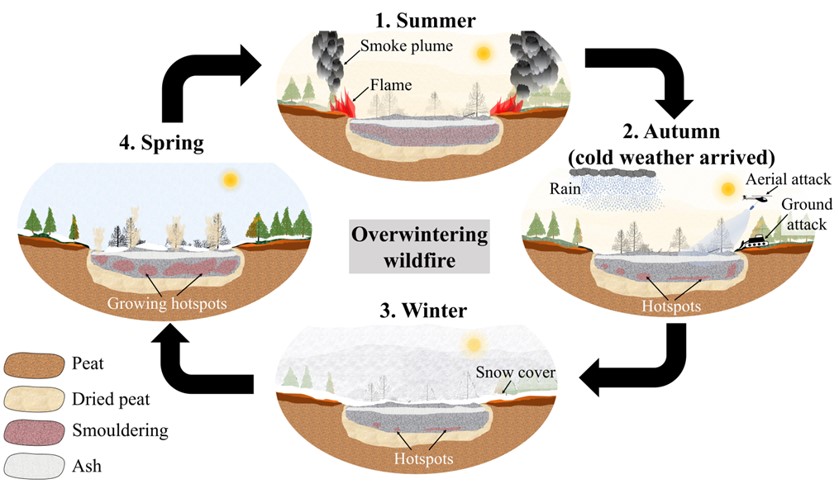Recent Arctic wildfires have burned previously unheard-of expanses of land and released significant amounts of prehistoric carbon into the atmosphere through smouldering fire. Due to their remote location and insufficient thermal signature, Arctic fires are poorly understood and challenging to detect. We are working on this project in order to understanding of the smouldering fire in this area can be beneficial to develop prevention and mitigation strategies.
Due to the persistent nature of the smouldering phenomena, smouldering wildfires pose a different threat from flaming fire. There have been instances where fires started in the summer continued to burn underground throughout the winter and then surfaced once the snow had melted [1]. Such fires that reappear after the winter season is through are known as zombie fires, since it once seemed that they were extinct in the autumn and then reappear in the spring [2]. However, they are more frequently referred to as holdover fires or overwintering fires (Fig. 1) [3, 4]

Figure 1. Illustration of the overwintering wildfire: the survival of the smouldering fires over winter which re-emerge during the arrival of spring (Rein and Huang 2021).
References:
[1] Jandt R, Thoman R (2020) The “Zombie” Fires of 1942.
[2] Vaughan BA (2020) ’ Zombie ’ fires are burning the Arctic after smouldering under snow. New Sci. 1–5.
[3] Rein G, Huang X (2021) Smouldering wildfires in peatlands, forests and the arctic: Challenges and perspectives. Current Opinion in Environmental Science & Health 24, 100296.
[4] Scholten R, Veraverbeke S (2020) Fires can overwinter in boreal forests of North America doi:10.5194/egusphere-egu2020-6013.







